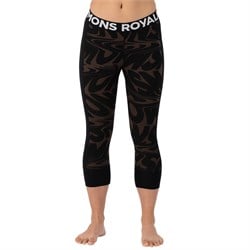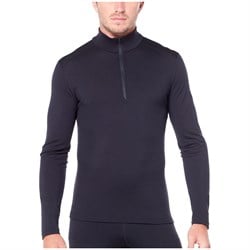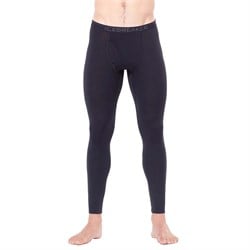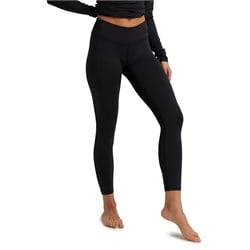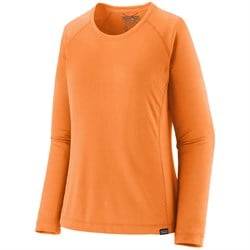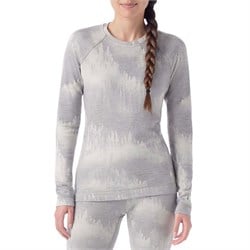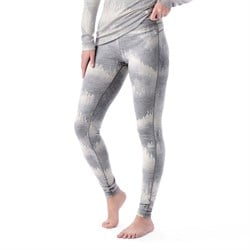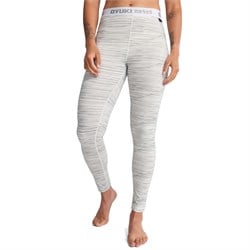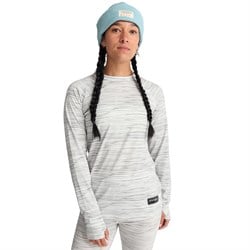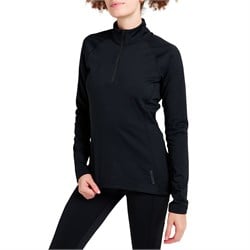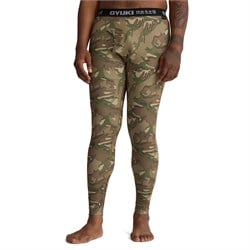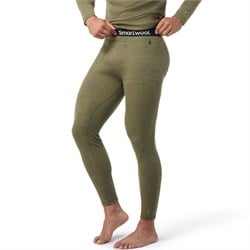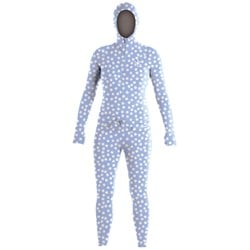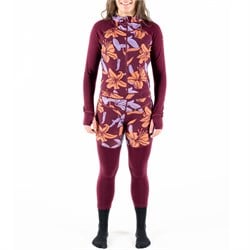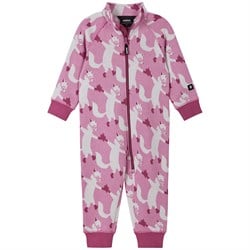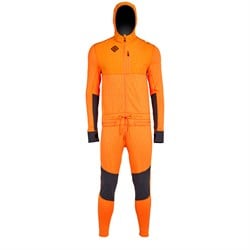How to Choose Ski Base Layers & Long Underwear
What is a base layer and why do you need to wear one?
A base layer is an insulating layer worn next to your skin. Base layers help regulate your body temperature by moving perspiration away from your skin, which will help keep your dry. Staying dry allows you to stay warm and happy in the winter. Base layers come in many forms, from t-shirts to leggings, tights, briefs and sports bras. Some are designed to contour to your body while others are more loose fitting. Base layers also come in different weights or thicknesses to suit different temperatures and activity levels. Learn more about baselayer "weights," what baselayers are usually made out of, and differenet baselayer styles below!
Weights
Baselayers are loosely organized into light, mid and heavy weight categories based on the fabric's weight per square meter (or sometimes ounce per square yard). Every brand has different cut offs for what light, mid and heavy weight actually means, so take this classification with a grain of salt!
Lightweight | <200 grams/M²
This is a thin first layer that goes next to your skin with the ability to easily add layers over it. Lightweight base layers are a crucial step in layering as they must be comfortable on the skin and are designed to fit tighter for the best moisture management. Worn alone, they are best suited for mild to cool conditions with high levels of activity like running, climbing, cross-country skiing, touring etc.
Midweight | <270 grams/m²
A midweight layer can be worn as a warmer first layer or as a second layer over your next-to-skin layer, providing a combination of insulation and moisture wicking. Alone, it is best suited to cool or moderately cool to cold conditions with medium levels of activity where you will be moving some of the time but standing still at others. It can be combined with lightweight layers underneath or heavyweight layers over it to accomplish the desired warmth.
Heavyweight | 250 grams/m² +
This is designed for cold conditions combined with any level of activity and often referred to as "expedition or thermal weight." Almost always worn over a lighter weight layer, heavyweight layers are designed to add insulation and are worn looser with less focus on moisture management. These layers are thicker due to their higher loft for insulation.
Materials
The majority of base layers in today’s world are composed of Merino Wool, synthetic fabrics like Polypropylene, or a blend of the two. Rather than absorbing moisture, these fabrics wick (transport) moisture and perspiration away from the skin and disperse it on the outer surface where it evaporates. Both of these fabrics do roughly the same things: efficiently transport moisture away from the skin, dry much faster than conventional cotton and reduce the risk of dramatic swings in body temperature.
Synthetic vs. Wool
| Synthetic | Merino Wool |
|
|
|
|
Types
Tops
Long sleeved base layers are most commonly used for colder conditions and are often paired with additional layers in order to maximize warmth. Short sleeved base layers tend to be used in hot to warm to cool conditions where moisture wicking is more important than heat retention and wearing just a short sleeve base layer is enough.Bottoms
Base layer bottoms come in two styles - the more traditional full leg or the increasingly popular 3/4 leg for use speficially with ski or snowboard boots where the bottom ends where your boot begins to avoid clumping.One-Piece
One piece base layers are the ultimate in base layer protection. They seal out any drafts and cover the majority of your body, making for a perfect base layer in cold conditions. Some one piece base layers even have a hood because 40% of your body heat can “escape” through your head.
Learn More With Our Other Outerwear & Layering Guides:
- Waterproof Ratings & Breathability Guide
- Skiing & Snowboarding - What to Wear Skiing & Snowboarding
- Outerwear - How to Choose a Ski & Snowboard Jacket
- Outerwear - How to Choose Ski & Snowboard Pants
- Outerwear - Fit Guide & Jacket Length
- How to Wash Waterproof Jackets & Clothing
- Outerwear - How to Choose by Region
- Outerwear - Construction, Fabric & Features
- Insulated Garments - How to Choose
- Insulated Garments - How to Wash Down & Synthetic Jackets
- Base Layers & Long Underwear - How to Choose
- GORE-TEX® Fabric - How it Works & Product Testing
- GORE-TEX® Fabric - How to Wash & Keep Waterproof
- Backcountry - How to Dress
Learn About Our Favorite Gear
- The Best Men's Ski Jackets
- The Best Women's Ski Jackets
- The Best Men's Snowboard Jackets
- The Best Women's Snowboard Jackets
- The Best Kids' Ski & Snowboard Jackets
- The Best Men's Ski Pants
- The Best Women's Ski Pants
- The Best Men's Snowboard Pants
- The Best Women's Snowboard Pants
- The Best Men's Ski Bibs
- The Best Men's Snowboard Bibs
- The Best Women's Ski Bibs
- The Best Kids' Ski & Snowboard Pants
- The Best Men's Down & Puffy Jackets
- The Best Men's Ski & Snowboard Mid Layers
- The Best Men's Ski & Snowboard Base Layers
- The Best Women's Snowboard Bibs
- The Best Men's Fleece Jackets
- The Best Women's Down & Puffy Jackets
- The Best Women's Fleece Jackets
- The Best Men's Rain Jackets
- The Best Women's Rain Jackets
- The Best Men's Hardshell Jackets
- The Best Women's Hardshell Jackets
- The Best Women's Ski & Snowboard Mid Layers
- The Best Women's Ski & Snowboard Base Layers
- The Best Down Vests
- The Best Kid & Toddler Snowsuits
This is evo. We are a ski, snowboard, wake, skate, bike, surf, camp, and clothing online retailer with physical stores in Seattle, Portland, Denver, Salt Lake City, Whistler, and Snoqualmie Pass. Our goal is to provide you with great information to make both your purchase and upkeep easy.
evo also likes to travel to remote places across the globe in search of world-class powder turns, epic waves, or legendary mountain biking locations through evoTrip Adventure Travel Trips. Or, if you prefer to travel on your own, check out our ski & snowboard resort travel guides and mountain bike trail guides.
Still have questions? Please call our customer care team at 1.866.386.1590 during Customer Care Hours. They can help you find the right setup to fit your needs.
